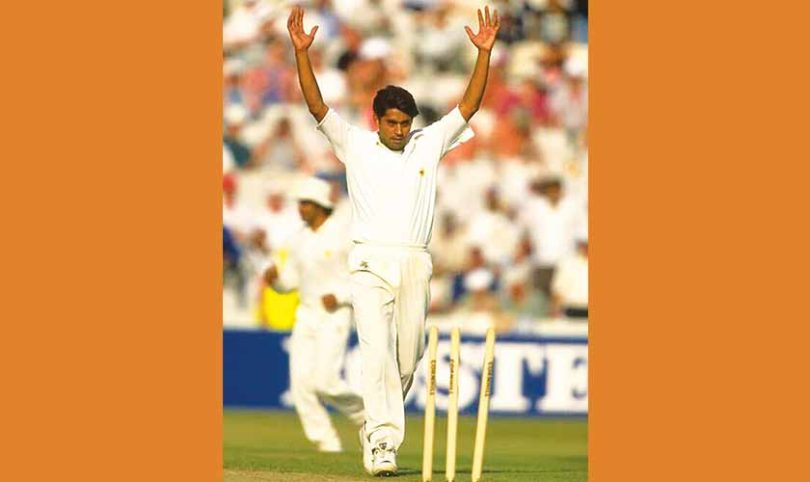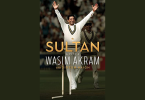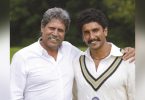Here we will evaluate the five Pakistani cricketers who either got a call very late or were hardly in the reckoning due to those players who were fortunate enough to make their debut early
Cricket may be a gentleman’s game but not every gentleman gets to represent their national team. Since there can be only 15 players in the squad and 11 in the final XI, some players with a lot of potential have to either sit out, fade into oblivion, or wait for their turn. Internationally, there are many examples such as Stuart MacGill who had to wait for the moment when Shane Warne was either tired, out of form or injured, and Michael Kasprowicz who despite being one of the best in the world didn’t fit in the Aussie side that played with three pacers, and a leggie. Here we will evaluate the five Pakistani cricketers who either got a call very late or were hardly in the reckoning due to those players who were fortunate enough to make their debut early.
Taslim Arif (Pakistan)
Before there was Adam Gilchrist, there was Taslim Arif. The comparison might look weird right now but the truth is in a world of ‘Wicket-Keepers Only’, Taslim Arif would certainly have been the Odd Man Out. He represented Pakistan for hardly one year but managed to make a name for himself by scoring the most runs in an innings as a Wicket-Keeper batsman (210 not out against Australia) before his record was broken by Andy Flower of Zimbabwe twenty years later. Add to that his 90 and 46 runs (solely as an opening batsman) on Test debut and another fifty and Taslim Arif’s career statistics are better than any Pakistani batsmen – 501 runs at an average of 62.62 in 6 Tests! He even dismissed Graeme Beard as a bowler, turning out to be a true all-rounder who couldn’t get any more chances because there were better opening batsmen than him in the reckoning, and a better wicket-keeper behind the stumps, namely Wasim Bari. Taslim Arif was over 30 when Bari finally quit and by then, younger wicket-keepers had appeared on the circuit. Had Taslim Arif been a competitor of Kamran Akmal in the 2000s, people would have worshipped him for his glovework and batting, and who knows he might have overtaken Wasim Bari if he got consistent chances.
Aaqib Javed (Pakistan)
He came, he bowled and he shattered records in the early part of his career; although when he made his ODI debut Gordon Greenidge and Viv Richards were around, Brian Lara was nowhere to be seen, Sachin Tendulkar was yet to make his debut, and Mudassar Nazar was opening the innings for Pakistan. In fact, he bowled a spell in international cricket with Sikandar Bakht as well, in what was the lanky bowler’s last match. That doesn’t mean Aqib Javed was born in the time of the dinosaurs, he was there when Cricket was evolving. At one time he held the world record for the best bowling analysis in ODIs (7/37 against India), was the youngest bowler to take a hat-trick in ODIs (same match) and was a World Cup winner before his 20th birthday. However, the emergence of Waqar Younis in 1989 and that of Mohammad Zahid in 1997 and Shoaib Akhtar in 1999 limited the number of opportunities for the medium-paced Aaqib. He did represent Pakistan in 163 ODIs between 1988 and 1998, took as many as 182 wickets but his Test career was limited to 22 appearances. That had as much to do with his record (5 wicket-haul in an innings just once), his inability to bat as well as Pakistan’s dependence on the two Ws. He played just one Test in 1993, one in 1994 and six in 1995 before hanging up his boots after his final Test in 1998. Had he been born later and played Cricket for Pakistan somewhere around 2007, he might have been the spearhead for Pakistan and bowlers like Rana Naved, Rao Iftikhar, and others would not have made it to the international level!
Misbah ul Haq (Pakistan)
Before he became the most powerful man in Pakistan Cricket, Misbah ul Haq was a promising a middle-order batsman who shared the same surname ‘Ul Haq’ to the country’s leading batsman. He made his Test and ODI debut for the country way back in 2001 and 2002, respectively, but had to wait for a handful of years to earn a recall. The reason wasn’t his performance but his presence in the wrong era – at that time Pakistan’s middle-order consisted of Younis Khan, Inzamam ul Haq and Yousuf Youhana (later Mohammad Yousuf) and they rarely experienced bad patches or gave excuses to selectors to pick someone else. As soon as Inzamam ul Haq retired (after Pakistan’s shocking performance in World Cup 2007) and Yousuf decided to take a break after being dropped from T20 World Cup (after Misbah ul Haq was preferred over him), Misbah ul Haq became a prominent part of Pakistan side, first as a middle-order batsman, later as a Captain and finally as a Chief Selector-Head Coach after retirement. He went on to earn the nickname Tuk Tuk for his meticulous batting, equaled the World Record for Fastest Century in Tests and steered Pakistan towards top position in ICC Test Championship. He remains the most successful Test Captain Pakistan ever produced and had he not been dropped after his first Test, who knows what else he might have achieved!
Saeed Ajmal (Pakistan)
He made his Test, ODI and T20I debut for Pakistan after he celebrated his 30th birthday because Pakistan relied first on Saqlain Mushtaq, and then on Mohammad Hafeez and Shoaib Malik when it came to off-spinners. Since Hafeez and Shoaib were all-rounders, Saeed Ajmal was rarely seen as a threat until he proved his worth later in his career. He made his ODI debut in the Asia Cup in 2008, a tournament that was famous for Ajantha Mendis’ emergence but little did the fans know that it would be the senior off-spinner who would mesmerize all with his magic. Before his career was prematurely brought to an end by chucking allegations seven years later, Saeed Ajmal managed to increase his tally of wickets to 178 in 35 Tests, 184 in 113 ODIs, and 85 in just 64 T20Is which is more impressive than any bowler’s stats during the same period. Just imagine how he would have performed had he made his debut before the World Cup 2003 instead of after the next one. Contrary to popular belief, he was a contemporary of Saqlain Mushtaq making his debut in the mid 90s instead of being his widely believed successor. Saqlain Mushtaq was born in December 1976, Saeed Ajmal was born just ten months later!
Imran Tahir (South Africa)
And then there is the strange case of Imran Tahir. The Leg Break Googly bowler was born in Lahore, played his junior-level and first-class Cricket in Pakistan, but without getting a place into the senior side. That had more to do with the presence of first Mushtaq Ahmed, then Shahid Afridi and later the emergence of Danish Kaneria than Imran’s performance. That’s why his decision to settle in South Africa was a masterstroke and helped him prolong his career. Not only did Imran Tahir represent his adopted country in all formats of Cricket but he also became the top-rated bowler in the world. On the other hand, Danish Kaneria was banned from Cricket for his involvement in match-fixing and brought shame to the game and the country he represented.
Next Week: Born in the wrong era part 2







